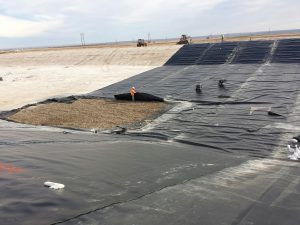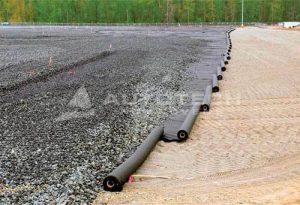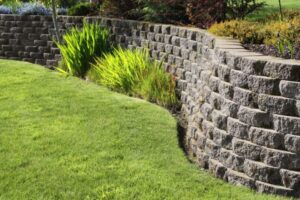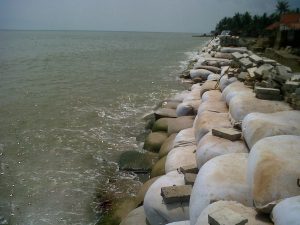Landfill Project at Tirupati – Case Study

Landfill locations are unattractive. Unfortunately, there is more to the issue than just the presence of enormous trash piles. Landfill garbage raises a variety of environmental and health concerns. Many of the various items that wind up in landfills contain toxins that, when they are discharged, seep into the groundwater and soil. These pollutants can contaminate the environment for many years and pose serious risks.
Consider the electronics that are thrown away and wind up in landfills, such as computers, batteries, and televisions. These items include elements such as arsenic, acids, lead, and others that could wind up in our environment and endanger people’s health.
The primary focus of this case study is the issues and solutions the landfill in a densely populated city like Tirupati encountered. This case study also discusses the type of Ocean HDPE Liner & Ocean Geotextile employed to address the problems caused by Tirupati’s landfill and how those solutions have affected the city’s general standard of living.
Product – Ocean HDPE Liner-1.5mm thickness & Ocean Geotextile 200gsm
Quantity – 10420 Sqm
Location – Tirupati
Problem
Improper garbage management has caused serious environmental problems that affect the entire world. Landfills are undoubtedly a solution to the issue. But even landfills can present a serious concern if they are not designed correctly and maintained properly.
One of the biggest dangers that cannot be ignored at all is solid waste. It might come from homes, workplaces, hospitals, farms, industrial byproducts and residues, oil refinery waste, etc. Inadequately managed landfills pose major risks for air, land, and water contamination, among other things.
There are several serious environmental risks brought on by the gases (like methane) emitted by the garbage that is put in some landfills, including landfill fires, atmospheric changes, soil degradation, and others.
Due to the city’s development and exponentially growing population, landfills were a major issue in Tirupati. In order to prevent additional environmental degradation, it was necessary to reevaluate the liners used in landfill construction due to the rising volumes of waste being put there.
Solution
Geotextiles, which serve as liquid and gas barriers, are now an essential part of civil engineering because of the increased requirement for groundwater and environmental protection. The most widely utilized geotextiles are made of high density polyethylene (HDPE), particularly those that have been approved by government regulators and have a thickness of at least 1.5 mm.
It is frequently necessary to safeguard geomembrane systems, coated materials, and related construction components against potential mechanical harm. Without adequate protection, sharp-edged objects like stones, the unevenness of the subsoil, or even the cover material could cause damage. Protection layers are frequently made of mechanically bonded needle-punched nonwovens and composite materials made of polypropylene (PP).
Many times, using a geosynthetic clay liner can save the landfill owner money and the environment by replacing the need to import natural sealing clays. In order to provide higher levels of containment safety, reduce desiccation issues, root penetration issues, and extend the soil type usage against potential ion exchange issues that may be a problem with conventional geosynthetic clay liners, the geosynthetic clay liner can also be coated with polyethylene.



